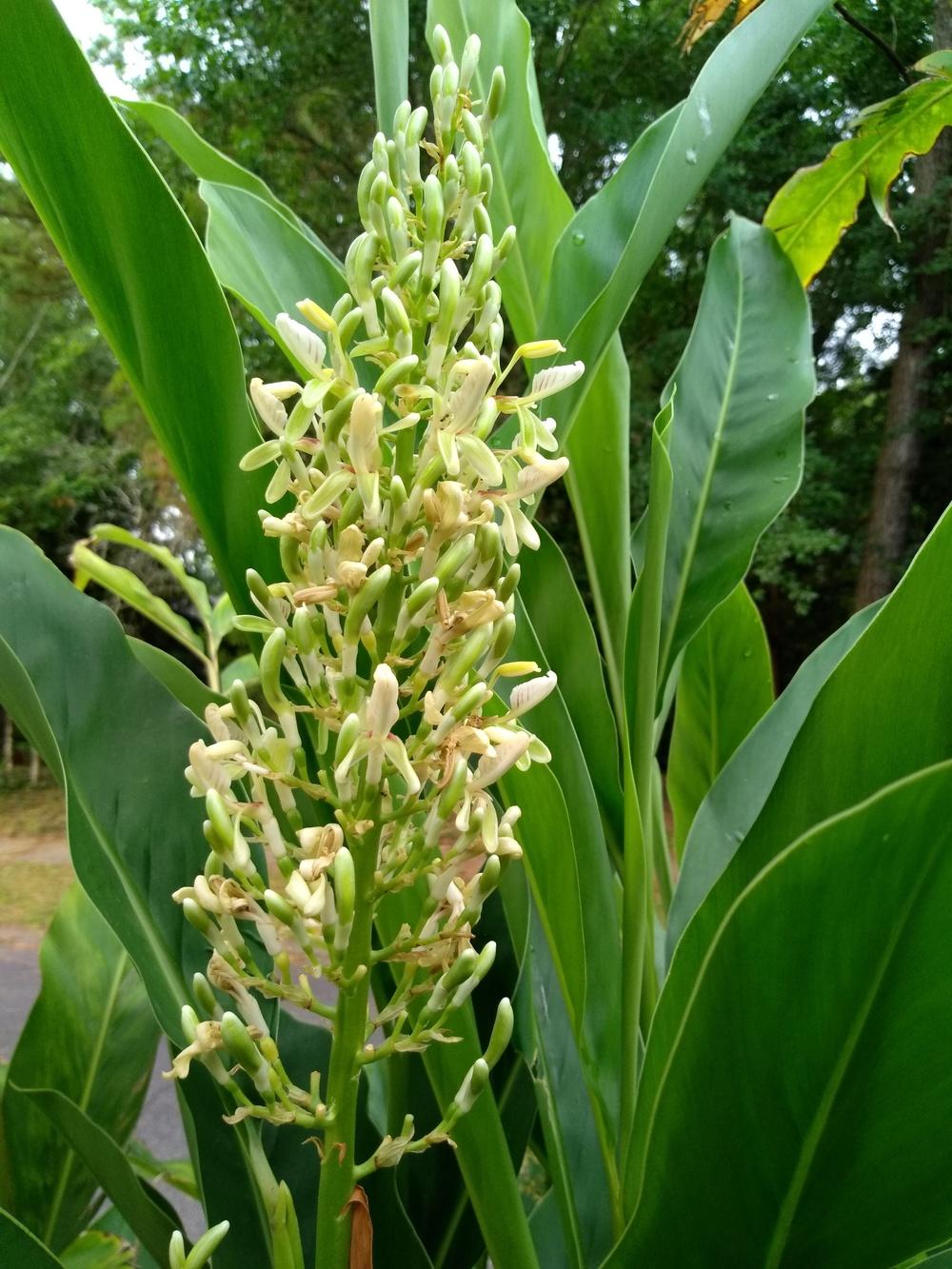
Galangal
Alpinia galanga
Basic Information
🌿 Family: Zingiberaceae🗺️ Zone: 9-11
Other Names:
- Greater Galangal
- Siamese Ginger
- Blue Ginger
🌡️ Ideal Temperature : 70°F – 85°F
🔥 Heat Tolerance: Up to 95°F
❄️ Cold Tolerance: Down to 25°F
🌱 Type: Perennial
Layers
- Herbaceous
Description
Galangal (*Alpinia galanga*) is a tropical perennial herb native to Southeast Asia, belonging to the ginger family, Zingiberaceae. The plant typically reaches heights of 1.5 to 2 meters, featuring long, lanceolate green leaves measuring approximately 25-35 cm in length. It produces small, aromatic flowers that are white with deep-red streaks, blooming at the top of the plant. The rhizomes are similar in appearance to ginger but are smaller and have a distinct, pungent aroma with flavors reminiscent of citrus, black pepper, and pine needles.
🌞💧 Sun and Water Requirements:
Galangal thrives in partial shade and requires moist, fertile, well-drained soil. Regular watering is essential to maintain consistent soil moisture, but ensure the soil is not waterlogged to prevent root rot.
✂️🫘 Methods to Propagate:
Propagation is primarily achieved through division of the rhizomes. Select healthy rhizomes with at least two "eyes" or growth nodes. Plant the rhizome sections approximately 5 cm deep in well-prepared soil during the warm season, ensuring adequate spacing to accommodate mature plant size.
🧑🌾👩🌾 When to Harvest:
The rhizomes are typically ready for harvest 10 to 12 months after planting, once the plant's aerial parts begin to yellow and die back. Carefully dig around the base to extract the rhizomes without causing damage.
Purpose
- **Edible:** The rhizomes are a staple in Southeast Asian cuisines, imparting a unique flavor to dishes such as Thai curries and soups.
- **Medicinal:** Traditionally used to alleviate digestive issues, respiratory ailments, and inflammation.
- **Pollinator:** The aromatic flowers attract various pollinators, enhancing garden biodiversity.
- **Wildlife Attractor:** Provides habitat and food sources for beneficial insects and small fauna.